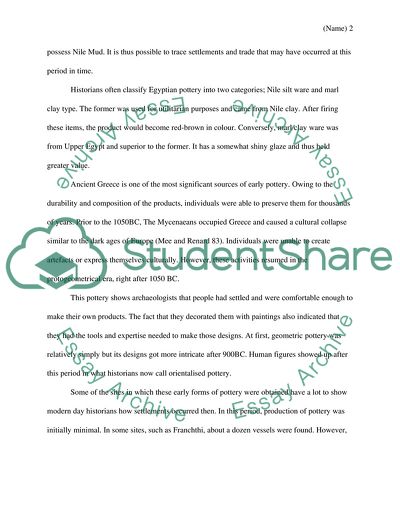Cite this document
(Pottery and Occupation Histories Essay Example | Topics and Well Written Essays - 1500 words, n.d.)
Pottery and Occupation Histories Essay Example | Topics and Well Written Essays - 1500 words. https://studentshare.org/archaeology/1813147-what-can-pottery-tell-us-about-settlement-practice-and-occupation-histories-archaeology
Pottery and Occupation Histories Essay Example | Topics and Well Written Essays - 1500 words. https://studentshare.org/archaeology/1813147-what-can-pottery-tell-us-about-settlement-practice-and-occupation-histories-archaeology
(Pottery and Occupation Histories Essay Example | Topics and Well Written Essays - 1500 Words)
Pottery and Occupation Histories Essay Example | Topics and Well Written Essays - 1500 Words. https://studentshare.org/archaeology/1813147-what-can-pottery-tell-us-about-settlement-practice-and-occupation-histories-archaeology.
Pottery and Occupation Histories Essay Example | Topics and Well Written Essays - 1500 Words. https://studentshare.org/archaeology/1813147-what-can-pottery-tell-us-about-settlement-practice-and-occupation-histories-archaeology.
“Pottery and Occupation Histories Essay Example | Topics and Well Written Essays - 1500 Words”. https://studentshare.org/archaeology/1813147-what-can-pottery-tell-us-about-settlement-practice-and-occupation-histories-archaeology.


